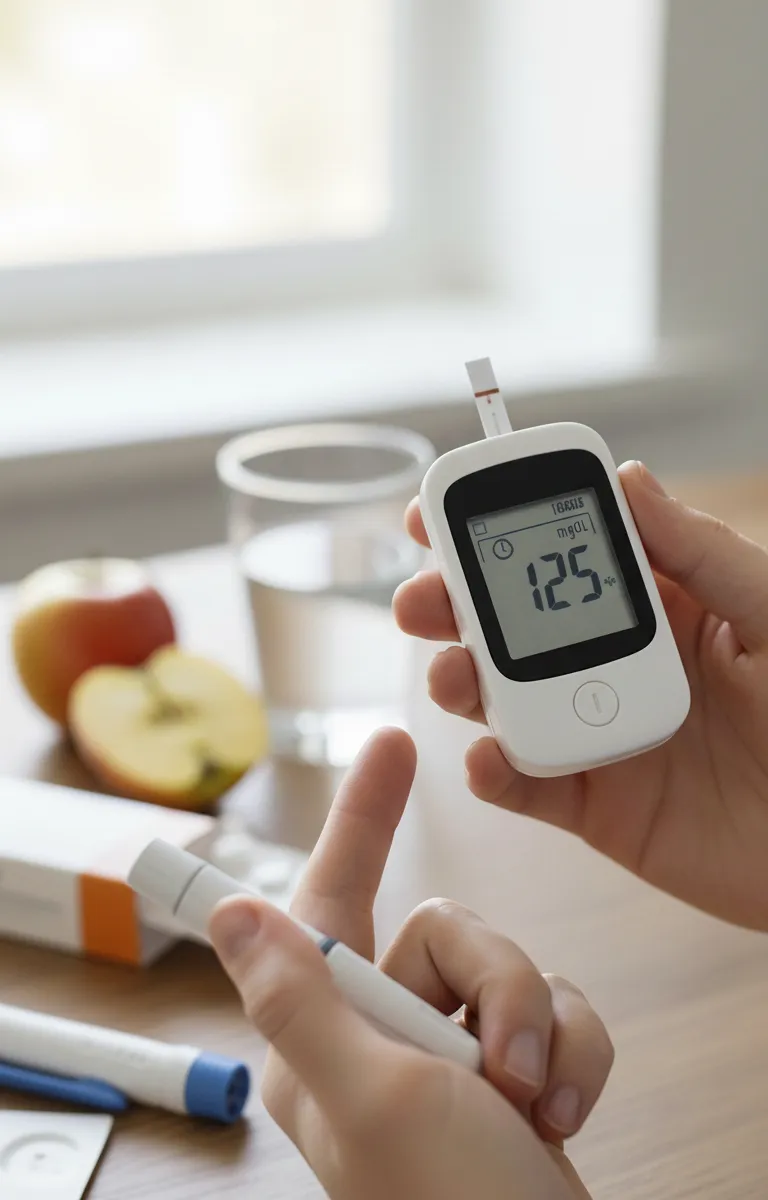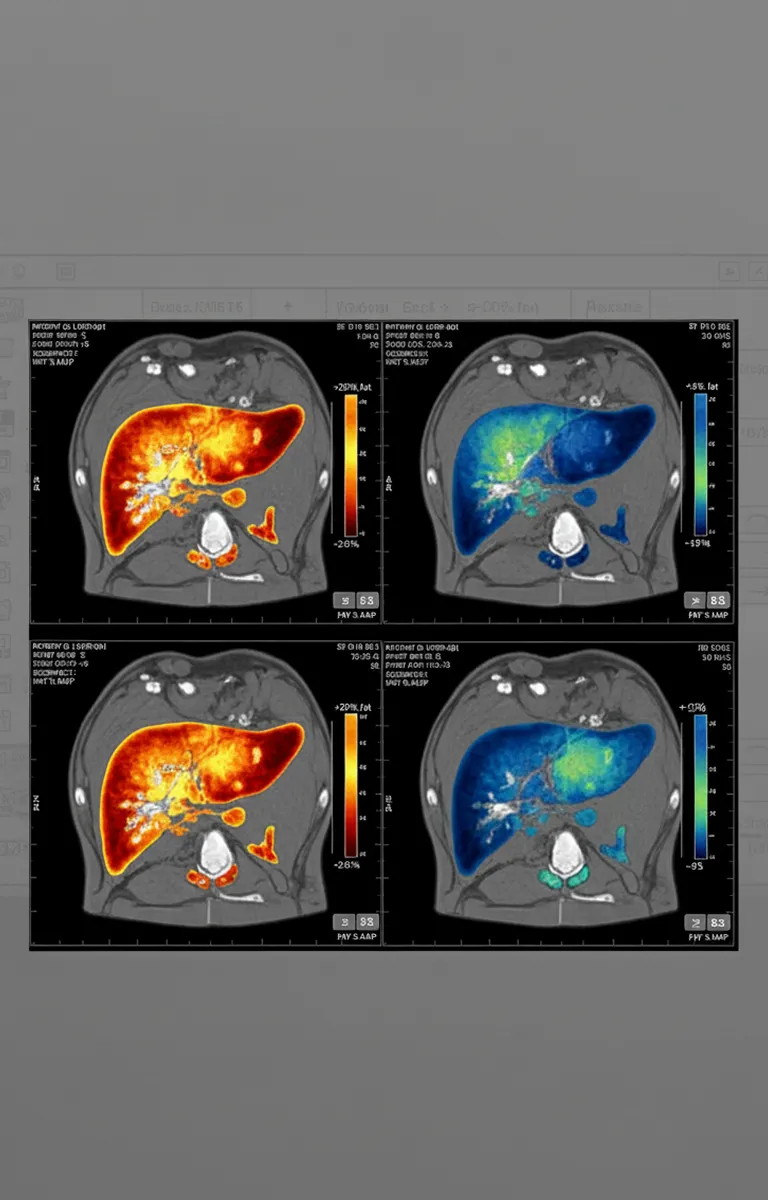Retatrutide for Diabetics: Dual Benefits for Glucose and Weight Management
Retatrutide targets three metabolic pathways to help people with type 2 diabetes manage blood sugar and lose weight more effectively than current treatments.

Introduction
Managing type 2 diabetes has always involved a difficult trade-off. Medications that lower blood sugar often lead to weight gain. Weight-loss treatments may not provide adequate glucose control. For the millions of people dealing with both conditions simultaneously, this creates a frustrating cycle where improving one aspect of health can worsen the other.
Retatrutide, an investigational triple-hormone agonist from Eli Lilly, represents a potential shift in how diabetes and obesity are treated together. Unlike existing therapies that primarily target a single pathway, Retatrutide activates three metabolic receptors, GLP-1, GIP, and glucagon, to address both glucose regulation and weight reduction at the same time. Early clinical trial data suggest it may deliver meaningful improvements in both areas, offering a more comprehensive approach for patients who haven't achieved their goals with current treatments.
The Challenge of Managing Both Weight and Glucose
Most people with type 2 diabetes don't just have a blood sugar problem. They have a metabolism problem. Insulin resistance, weight gain, and high glucose are all interconnected. When cells stop responding to insulin properly, the pancreas compensates by producing more. That extra insulin signals the body to store fat, which worsens insulin resistance. It's a cycle that's hard to break.
Traditional diabetes medications focus on lowering blood sugar, which they do well. But many of them, like sulfonylureas or insulin itself, can cause weight gain. On the other hand, weight-loss drugs that aren't designed for diabetes might not provide adequate glucose control. Patients are often left choosing between two priorities that should really be addressed together.
Doctors have tried combining medications, but that brings its own complications: more pills, more side effects, higher costs. What's needed is a treatment that improves insulin sensitivity while also reducing body weight. Until recently, that's been more of a theoretical goal than a clinical reality.
Why Retatrutide Offers a Dual-Action Advantage
Retatrutide works differently because it activates three hormone receptors simultaneously: GLP-1, GIP, and glucagon. The practical result is a treatment that addresses metabolism from multiple angles rather than relying on a single mechanism.
Glucose Control Mechanisms
The GLP-1 component is likely familiar to anyone who has heard of Ozempic or Mounjaro. GLP-1 helps the pancreas release insulin when blood sugar is elevated, and it also slows digestion so glucose doesn't flood the bloodstream all at once. That smooths out the spikes and crashes that make diabetes difficult to manage day-to-day.
But Retatrutide also activates the GIP receptor, which older drugs largely ignored. GIP improves how muscle and fat cells respond to insulin. In other words, it makes existing insulin work more effectively. That reduces strain on the pancreas and helps lower fasting glucose levels without requiring additional medication.
Between these two actions, Retatrutide appears to lower HbA1c, the standard measure of long-term blood sugar control, by a significant margin. In clinical trials, some participants saw reductions of over 2 percentage points. That's the kind of improvement that can move someone from poorly controlled diabetes into a much healthier range.
Weight Reduction and Fat Metabolism
The third hormone, glucagon, plays a different role. Normally, glucagon tells the liver to release stored glucose, which isn't helpful for someone with diabetes. But in small, controlled doses, combined with GLP-1 and GIP, it does something else: it increases fat burning and energy expenditure.
This matters because losing weight with diabetes isn't just about eating less. Metabolism is already impaired. Retatrutide appears to activate fat oxidation pathways, helping the body burn stored fat instead of accumulating it. In trials, participants lost an average of 15 to 24 percent of their body weight depending on the dose. That's not just cosmetic, it's metabolically significant. Weight loss at that level often leads to better insulin sensitivity, lower blood pressure, and reduced liver fat.
The treatment doesn't just manage symptoms. It appears to improve the underlying metabolic dysfunction.
Clinical Trial Results in Diabetic Populations
Most early Retatrutide data came from people with obesity but without diabetes. Those results were impressive, but what about people who actually have type 2 diabetes? Eli Lilly conducted separate studies to answer that question.
In one Phase 2 trial involving diabetic patients, participants took Retatrutide for 36 weeks. On average, their HbA1c dropped by about 2.2 percentage points at the higher doses. Fasting glucose levels also fell significantly. Some participants were able to reduce or even stop other diabetes medications they had been taking for years.
At the same time, weight loss mirrored what was seen in the obesity trials, around 16 to 18 percent on average, with some individuals losing more. That combination of improved glucose control and substantial weight reduction is uncommon. Most diabetes drugs provide one or the other, not both at that level.
Participants also saw improvements in cholesterol, blood pressure, and liver fat. These aren't minor details. They're the markers that determine whether diabetes leads to heart disease, kidney problems, or liver damage over time. If Retatrutide can shift all of those in the right direction, it could meaningfully alter long-term outcomes.
How Retatrutide Compares to Ozempic and Mounjaro in Diabetic Patients
Ozempic (semaglutide) has been a significant advancement for many diabetics. It lowers HbA1c by about 1.5 to 2 percentage points and leads to modest weight loss, usually around 10 to 15 percent.
Mounjaro (tirzepatide), which activates both GLP-1 and GIP, goes further. It tends to lower HbA1c slightly more than Ozempic and results in greater weight loss, often around 15 to 20 percent. For many patients, Mounjaro currently represents the most effective option available.
Retatrutide takes the same dual-agonist approach as Mounjaro and adds glucagon receptor activation. Early data suggest that extra mechanism translates into modestly better outcomes, more weight loss, comparable or superior glucose control, and stronger effects on fat metabolism. In head-to-head comparisons still underway, Retatrutide appears to have a slight edge, particularly for patients who need substantial weight reduction.
That said, these differences may not be clinically meaningful for everyone. Patients doing well on Ozempic or Mounjaro may not need to switch. But for those who haven't reached their treatment goals with existing therapies, Retatrutide could provide the additional efficacy they need.
What Patients Can Expect Based on Current Data
Based on trial protocols, Retatrutide treatment would likely start with a low dose that gradually increases over several weeks. This approach helps minimize side effects like nausea, which are common with all GLP-1-based drugs. Most trial participants tolerated Retatrutide about as well as Ozempic or Mounjaro, some initial gastrointestinal discomfort that typically subsides.
Within the first month or two, appetite suppression becomes noticeable. Patients report feeling full faster and staying satisfied longer. Blood sugar levels begin to stabilize, with fewer fluctuations throughout the day. By three to six months, weight loss becomes more apparent, and HbA1c typically shows measurable improvement.
The limitation, of course, is that Retatrutide isn't yet available. It remains in Phase 3 trials, and FDA approval isn't expected until late 2026 at the earliest. Even after approval, cost and insurance coverage will be significant barriers. GLP-1 drugs are expensive, and there's no indication Retatrutide will be different.
But for patients who have struggled to manage both diabetes and weight with existing treatments, it represents a meaningful development. Not a cure, but a tool that might finally address both problems without requiring patients to prioritize one over the other.
Conclusion
Type 2 diabetes management has long involved difficult compromises. Better blood sugar control often comes at the cost of weight gain. Weight loss can be challenging when metabolism is already impaired. Retatrutide may not solve every problem, but it appears to be the first drug that genuinely improves both glucose control and body weight in a clinically significant, sustained way.
The trial data are promising, HbA1c reductions exceeding 2 points, weight loss approaching 20 percent, and improvements across multiple metabolic markers. If those results hold in larger studies, Retatrutide could become a cornerstone of diabetes treatment, particularly for patients who haven't responded adequately to current options.
Approval is still at least a year away, but for patients frustrated by the limitations of existing therapies, it represents a genuine advancement. Not every new drug lives up to its early promise, but Retatrutide's triple-mechanism approach addresses a real gap in diabetes care, one that millions of patients experience every day.
Frequently Asked Questions
It depends. In clinical trials, some participants were able to reduce or stop other diabetes drugs while taking Retatrutide, but that decision should always be made with your doctor.
It's designed to work alongside lifestyle changes, and some people may still need additional medications depending on their baseline glucose control.
In trials, diabetic patients lost an average of 16 to 18 percent of their body weight over 36 weeks. Individual results vary based on dose, adherence, diet, and activity level. Some lost more, some less, but the majority experienced clinically significant weight reduction.
Current trials excluded people with severe complications like advanced kidney disease or a history of pancreatitis. If Retatrutide gets approved, doctors will need to evaluate it on a case-by-case basis. Early safety data look similar to other GLP-1 drugs, but long-term studies are still ongoing.
Eli Lilly is expected to submit Retatrutide for FDA approval in 2026, likely first for obesity and then for type 2 diabetes. If approved, it could be available by late 2026 or early 2027. Until then, it's only accessible through clinical trials.
Related Topics
Evidence-based articles to support your journey toward sustainable health.
Register your interest in Retatrutide
Retatrutide is currently not available, but once it is approved, you’ll be the first to get notified. Sign up now and stay informed.
Simple one-time sign-up
Early access to availability updates
Exclusive status among the first users
Advantage over non-registered users
%201.webp)
.svg)



